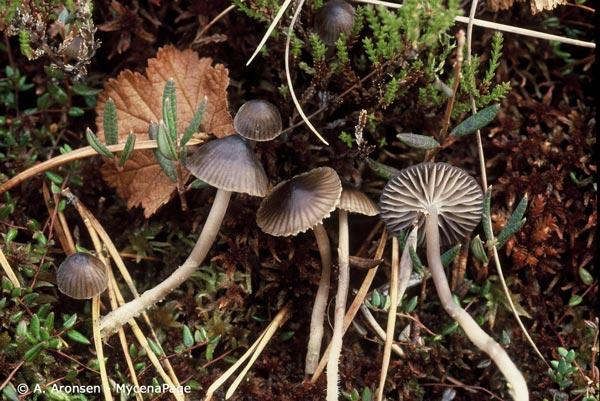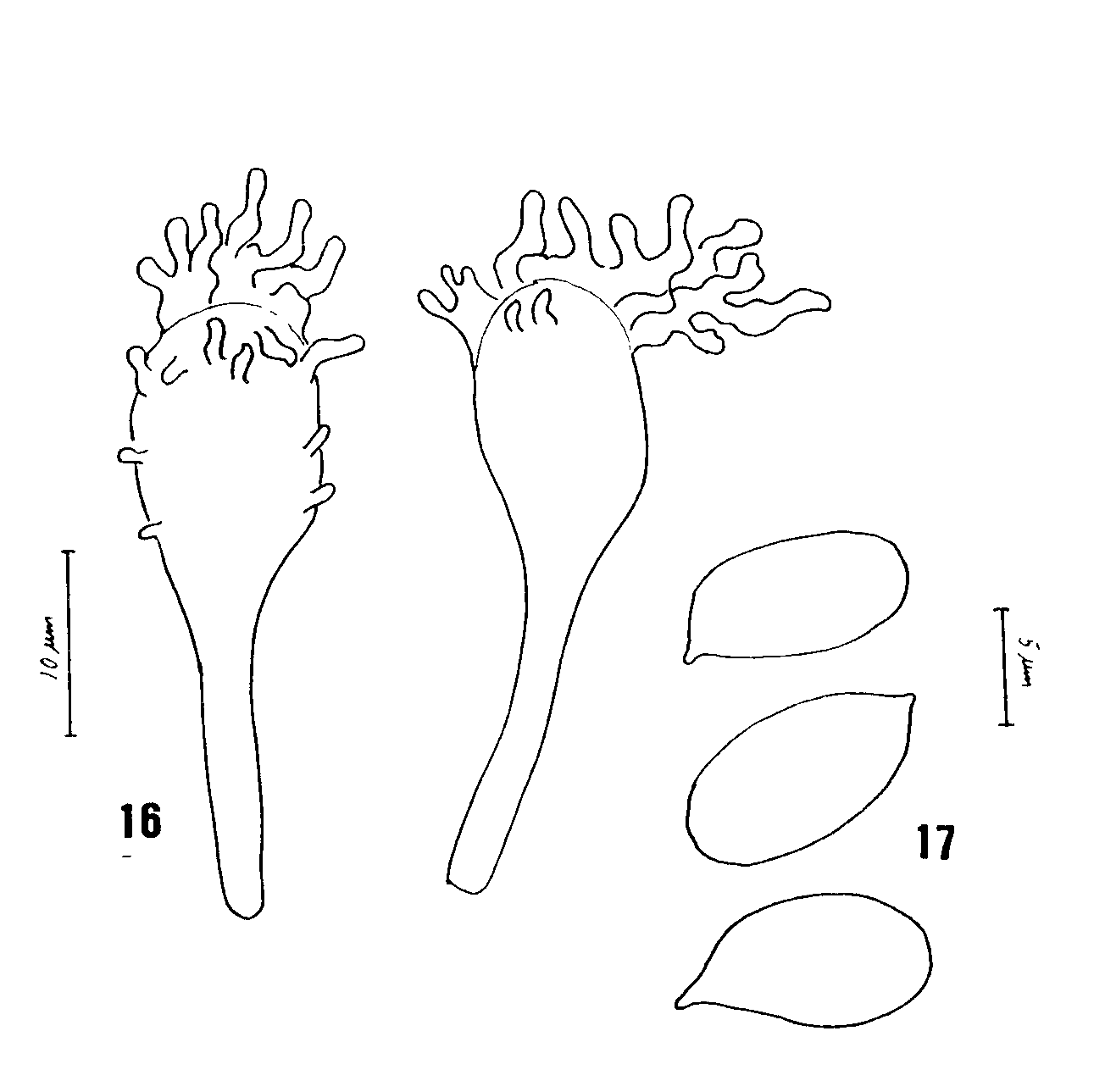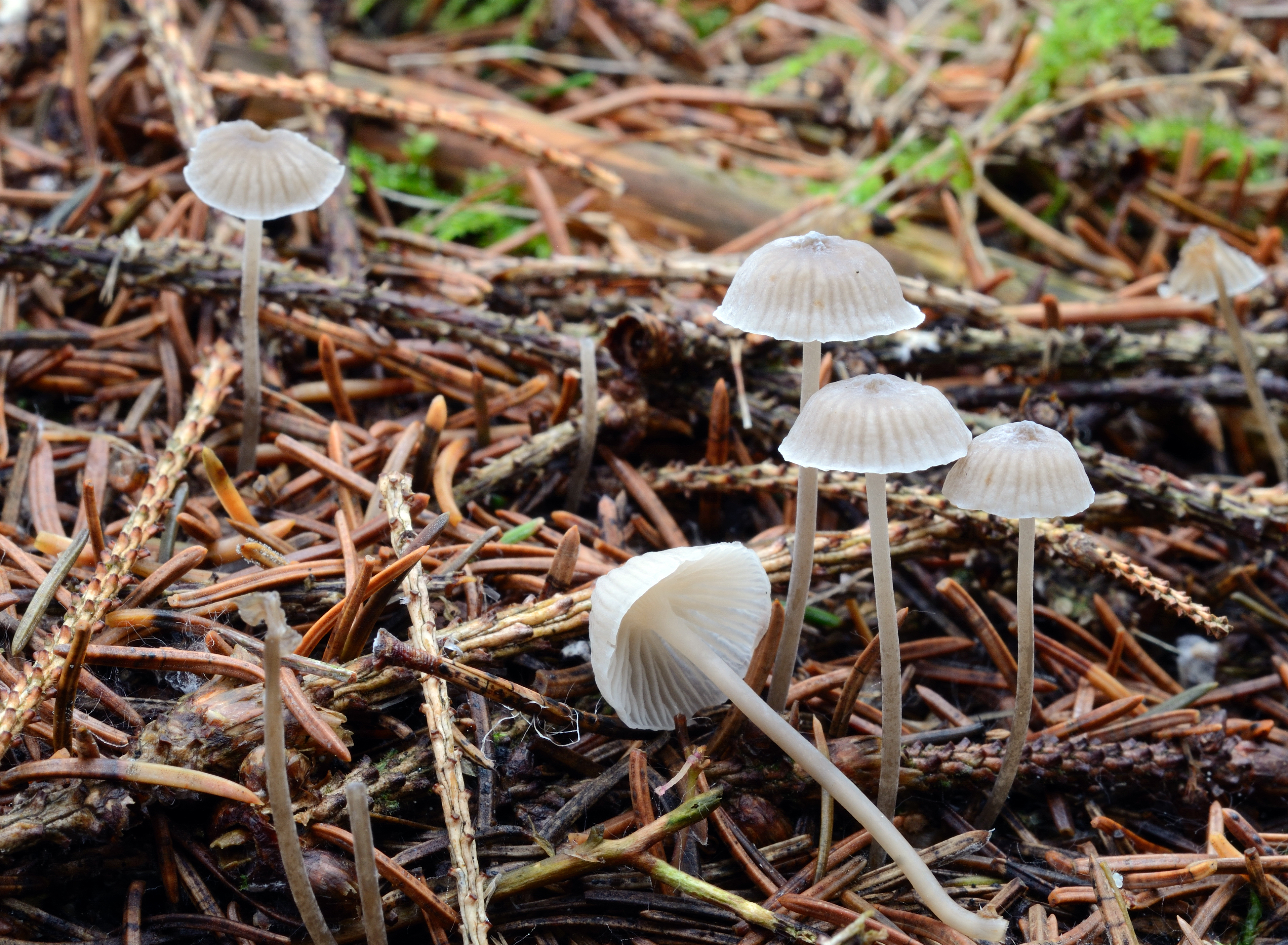Mycena concolor
Mycena concolor
Description
Cheilocystidia and spores.
Cap 7-12 mm across, broadly conical to parabolical, flattening with age, becoming plano-convex, with or without umbo, translucent-striate, pruinose, glabrescent, hygrophanous, dark sepia brown, often with a blackish grey centre when moist, pallescent to more greyish when drying, whitish at the margin. Flesh watery grey-brown. Gills 15-20 reaching the stem, broadly adnate, decurrent with a tooth, fairly thick, smooth to ribbed, intervenose with age, fairly dark grey-brown, paler with age, the edge paler to whitish. Stem 25-65 x 1-2 mm, cylindrical, delicately pruinose above, glabrous below, paler or darker grey-brown to more whitish grey, base covered with few to numerous, long, flexuous, whitish fibrils. Odour absent and taste insignificant. Basidia 27-35 x 7-10 µm, clavate, 4-spored. Spores 8-10.7 x 4-5.2 µm, Qav ˜1.8, narrowly pip-shaped to almost cylindrical, amyloid. Cheilocystidia 15-30 x 4.5-8 µm, occurring mixed with the basidia, clavate to subcylindrical, apically more or less strongly branched, covered with few to numerous, unevenly spaced, fairly coarse, simple to furcate, curved excrescences 2-10.5 x 1-3.5 µm. Pleurocystidia absent. Lamellar trama dextrinoid. Hyphae of the pileipellis 2-3.5 µm wide, more or less densely covered with simple to branched excrescences 1.8-7 x 1-2.5 µm, mostly gelatinized. Hyphae of the cortical layer of the stem 1.8-2.5 µm wide, smooth to sparsely diverticulate; the terminal cells 2.5-4.5 µm wide, more or less densely diverticulate. Clamps present in all tissues.
Ecology and distribution
Typically growing in Sphagnum, but sometimes found in other wet habitats. Summer to late autumn. Generally a rare and probably a declining species due to drainage of suitable habitats.


